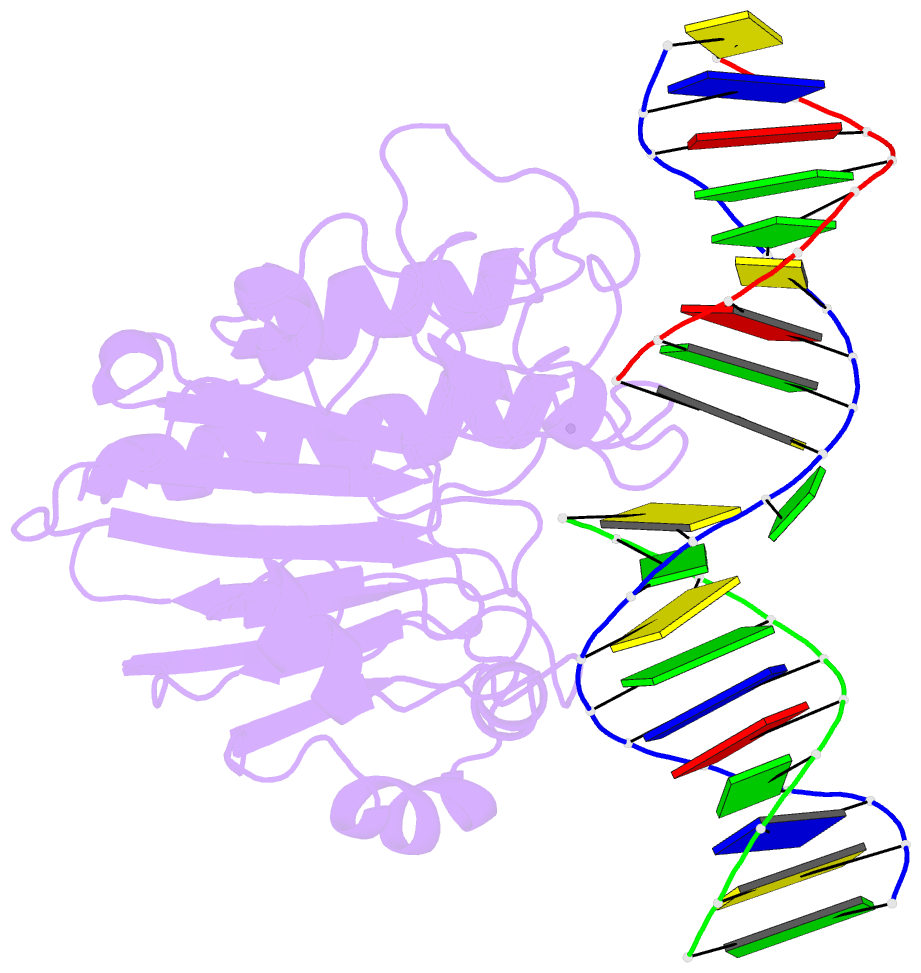Summary information and primary citation
- PDB-id
- 8ka5; SNAP-derived features in text and JSON formats;
DNAproDB
- Class
- hydrolase-DNA
- Method
- X-ray (2.8 Å)
- Summary
- Arabidopsis ap endonuclease arp complex with 20bp thf-containing DNA
- Reference
- Guo W, Wu W, Wen Y, Gao Y, Zhuang S, Meng C, Chen H, Zhao Z, Hu K, Wu B (2024): "Structural insights into the catalytic mechanism of the AP endonuclease AtARP." Structure, 32, 780-794.e5. doi: 10.1016/j.str.2024.02.014.
- Abstract
- Base excision repair (BER) is a critical genome defense pathway that copes with a broad range of DNA lesions induced by endogenous or exogenous genotoxic agents. AP endonucleases in the BER pathway are responsible for removing the damaged bases and nicking the abasic sites. In plants, the BER pathway plays a critical role in the active demethylation of 5-methylcytosine (5mC) DNA modification. Here, we have determined the crystal structures of Arabidopsis AP endonuclease AtARP in complex with the double-stranded DNA containing tetrahydrofuran (THF) that mimics the abasic site. We identified the critical residues in AtARP for binding and removing the abasic site and the unique residues for interacting with the orphan base. Additionally, we investigated the differences among the three plant AP endonucleases and evaluated the general DNA repair capacity of AtARP in a mammalian cell line. Our studies provide further mechanistic insights into the BER pathway in plants.





